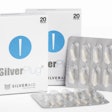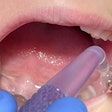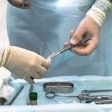
In patients with bisphosphonate-related osteonecrosis of the jaw (BRONJ), what is the best treatment to prevent a relapse? While a so-called drug holiday is often recommended for patients with osteoporosis before BRONJ surgery, a new study finds that this discontinuation of the drug did not influence the likelihood of relapse.
In fact, the surgery itself was the most frequent reason for relapse or need for additional surgery. The type of surgical procedure and mode of anesthesia were the most important factors in the treatment outcome, the study authors reported in the Journal of Oral and Maxillofacial Surgery (July 2017, Vol. 75:7, pp. 1404-1413).
"The risk of recurrence was greatest immediately after surgery, after which the probability of relapse decreased over time," they noted. "Moreover, it appears that extensive surgical procedures resulted in a better prognosis than less extensive treatment methods."
The lead study author was Hui Young Kim, DDS, a postgraduate student in the department of oral and maxillofacial surgery at the Graduate School of Seoul National University in South Korea.
The influence of the types of surgery and anesthesia
Bisphosphonate-related osteonecrosis of the jaw is a condition found in patients who have received intravenous and oral forms of bisphosphonate therapy to try to prevent the loss of bone mass and reduce the risk of fracture and skeletal complications. Sometimes it is known as medication-related osteonecrosis of the jaw.
In this study, researchers wanted to find out which type of surgical procedures would produce better treatment outcomes for these patients and if a shorter period of bisphosphonate intake or a longer period of discontinuation would have a better result.
The single-center retrospective cohort study included 325 subjects with a median age of 75 years who had presented to the oral and maxillofacial surgery department at Seoul National University Dental Hospital for BRONJ evaluation and management from March 2004 to September 2016. The study excluded patients with a history of malignant disease or chemotherapy.
Almost all the participants (97%) were women. Most of the patients were taking an oral bisphosphonate, 16 were receiving intravenous injections, and alendronate (Fosamax, Merck) was the most common type of bisphosphonate. All the patients received conservative and supportive treatment before surgery, which included stopping bisphosphonate treatment (taking a drug holiday) for a median of 51 days, the researchers reported.
About half of the surgical procedures were performed with the patients under general anesthesia and included the following:
- Curettage: A mild type of local intervention that involves the removal of superficial inflammatory soft tissue and necrotic bone
- Sequestrectomy: The removal of infected and avascular bone
- Saucerization: The removal of adjacent cortical bone and the formation of a saucer-like depression
- Mandibulectomy: The marginal or segmental resection of the mandible with reconstruction.
After surgery, 97 patients (30%) required at least a second surgery to treat the relapsed lesion, which an interval ranging from 10 days to 5.6 years, with relapse or treatment failure occurring most often immediately after the surgery.
As to surgical location, 73 of the 97 patients who needed retreatment had their initial procedure in the mandible, and 14 had their initial procedure in the maxilla. The location for the remaining 10 was listed as mandible and maxilla.
The type of surgical procedure and mode of anesthesia were the most important factors patients needing a second surgery, the authors reported. Patients who underwent curettage under local anesthesia had the worst prognosis after surgery and required retreatment, the researchers found.
| Outcome results for surgical and anesthesia types | |||
| Total | Success | Failure | |
| Surgical treatment | |||
| Curettage | 35 | 15 (42.9%) | 20 (57.1%) |
| Sequestrectomy | 207 | 147 (71.0%) | 60 (29.0%) |
| Saucerization | 78 | 61 (78.2%) | 17 (21.8%) |
| Mandibulectomy | 5 | 5 (100%) | 0 (0%) |
| Anesthesia | |||
| Local anesthesia | 136 | 77 (56.6%) | 59 (43.4%) |
| Intravenous sedation | 27 | 21 (77.8%) | 6 (22.2%) |
| General anesthesia | 162 | 130 (80.2%) | 32 (19.8%) |
In addition, nearly 25% of the study patients were also taking medication for diabetes, and 30 of the 80 (37.5%) patients relapsed. A majority of the patients (58.2%) were taking medication for hypertension, and 65 of the 189 (34.4%) patients had relapses. However, "patients with hypertension, a longer conservative treatment time, or surgical treatment more extensive than curettage performed with local anesthesia demonstrated a lower incidence relapse or treatment failure after surgery," the study authors wrote.
Surprisingly, having a drug holiday did not appear to influence the likelihood of relapse after surgery.
"The present study revealed no significant association between the prognosis after surgery and a history of intravenous administration of bisphosphonate, the duration of bisphosphonate use, or drug holidays before surgery," the authors wrote. "Thus, based on the results of our study, discontinuation of bisphosphonate intake before surgery can be omitted."
Extensive procedure
This study is perhaps the largest one conducted on this topic, the study authors noted. The study took place in an academic center, and they speculated that private practice dentists likely referred patients to their center because of the complexity of the surgeries, thus adding to the study population. However, it was a single-center study and more data from different locations are necessary, they added.
The authors concluded that if conservative treatment did not work, extensive surgery may be the preferred treatment for most patients.
"If surgical treatment is unavoidable, BRONJ in patients with osteoporosis might benefit from a more careful and extensive surgical procedure," they wrote, adding the importance of special care and frequent follow-up visits after surgery.



















